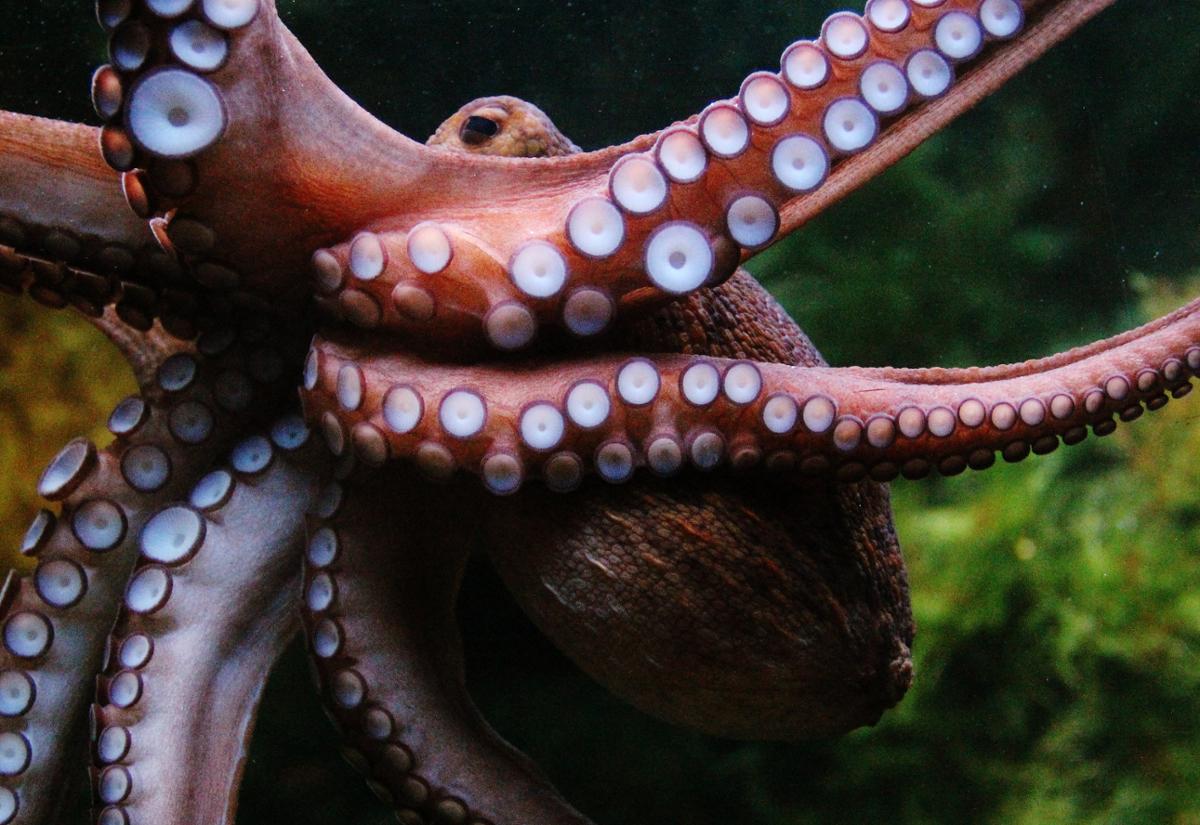Octopuses belong to a group of animals called mollusks, which includes slugs and snails. Most mollusks aren’t noted for being brainy, but octopuses are an exception. They evolved a much more complex nervous system than any other animal without a backbone.
Neuroscientists estimate that octopuses have five hundred million nerve cells in their bodies. This is almost in the same range with dogs. But because this nervous system evolved in a mollusk—separately from the evolutionary path taken by animals with backbones such as dogs or humans— its structure is almost entirely alien to ours.
One big difference is that about two-thirds of an octopus’s nerve cells are actually found outside its brain, in its eight arms. The movements of an octopus’s arms, and the suction cups that line them, are controlled semi-autonomously by these nerve cells, instead of entirely by the brain. Even if an octopus’s arm is cut off, the severed arm can continue to reach for, identify, and grasp things.
In 2020 a research group at Harvard University reported a new discovery that helps explain how the arm can perform such feats. They found that the octopuses’s suction cups contain cells that act as chemical sensors. These sensors detect and distinguish a wide variety of molecules that don’t dissolve well in water.
The researchers were able to identify some of the proteins and biochemistry involved. In effect, the sensors allow the octopus or its arms, to taste or smell whatever they touch. For example, it might help the animal tell whether it is touching a tasty crab or an inedible rock. These sensors help explain how the arm can function autonomously.










